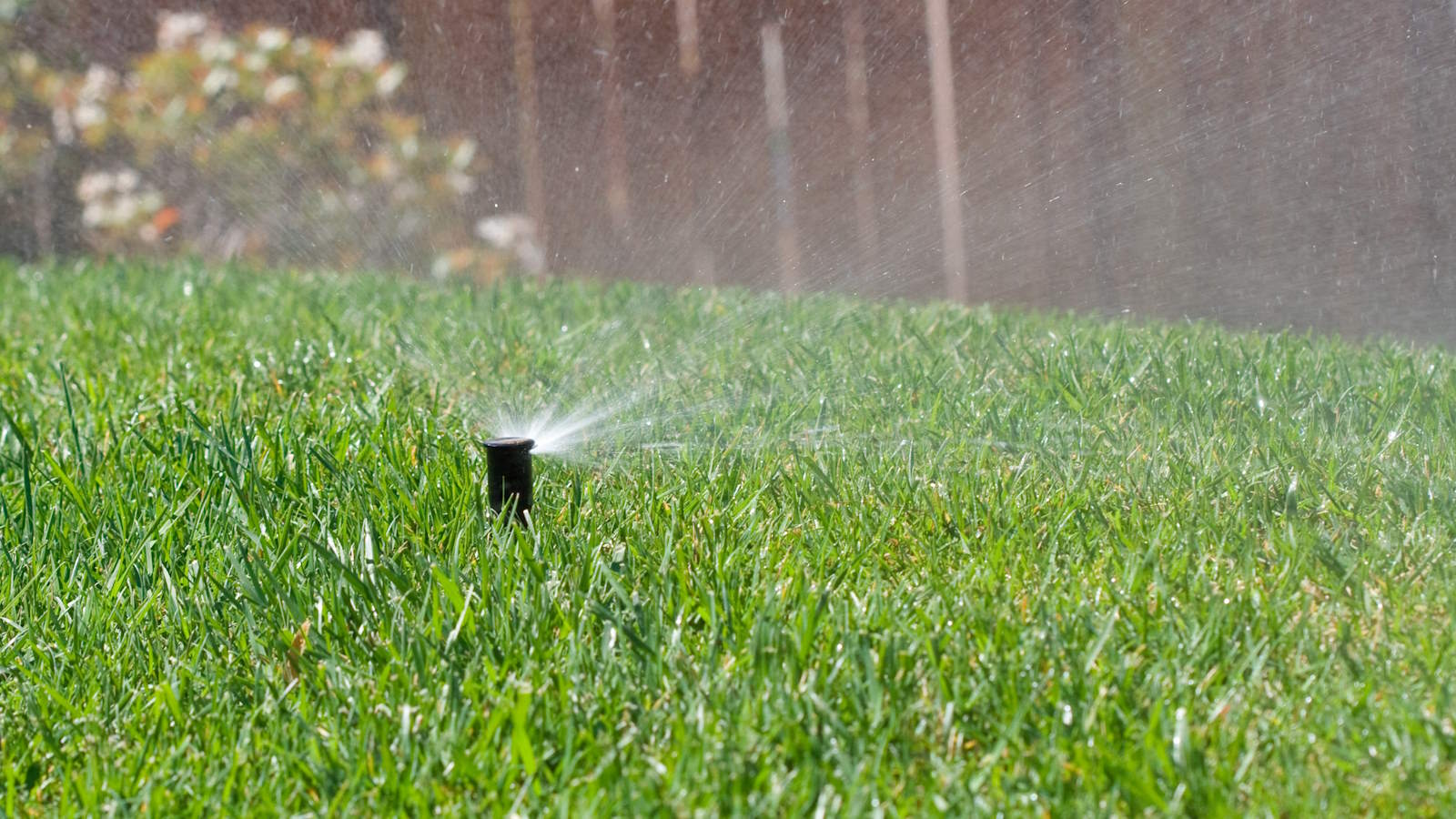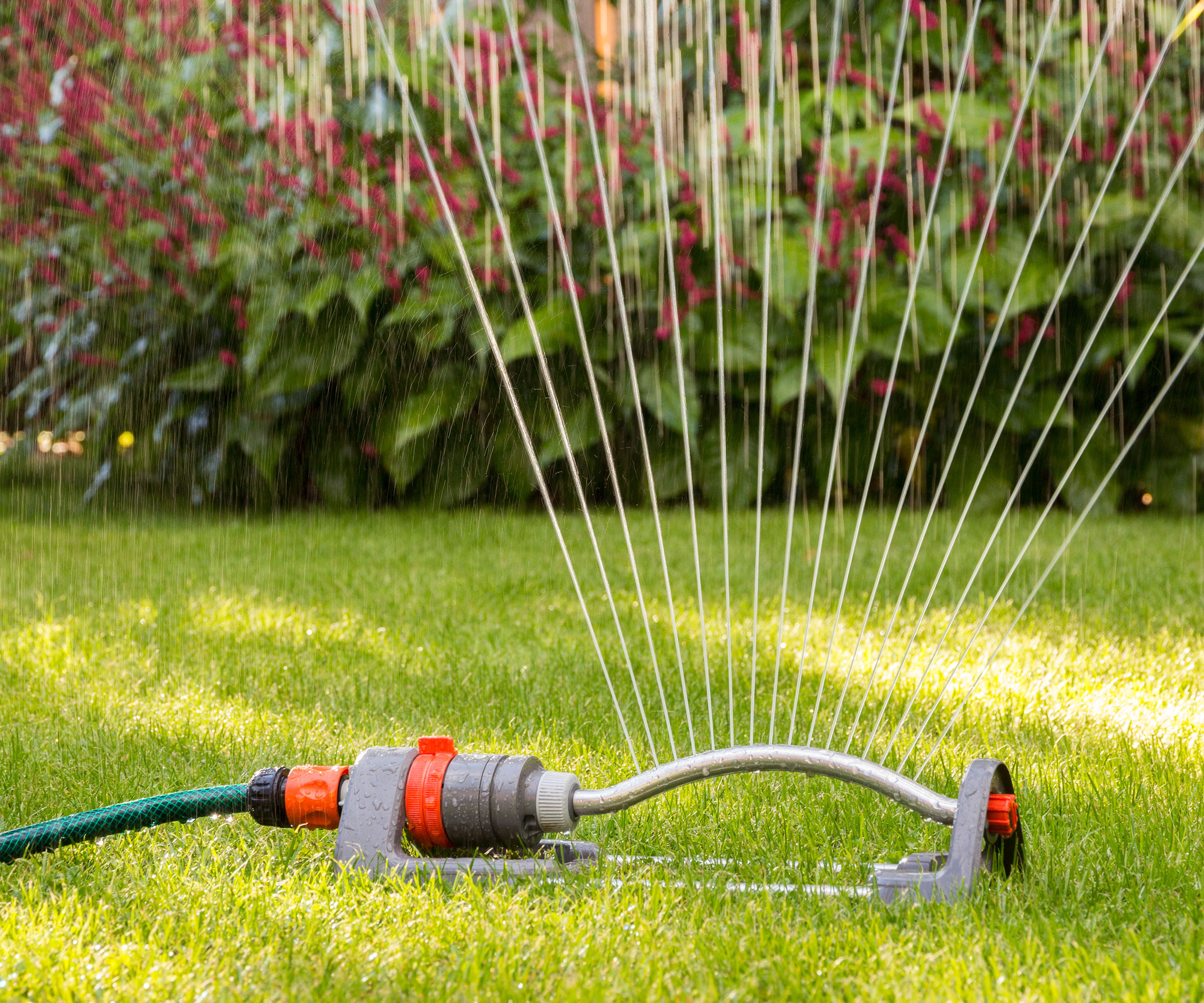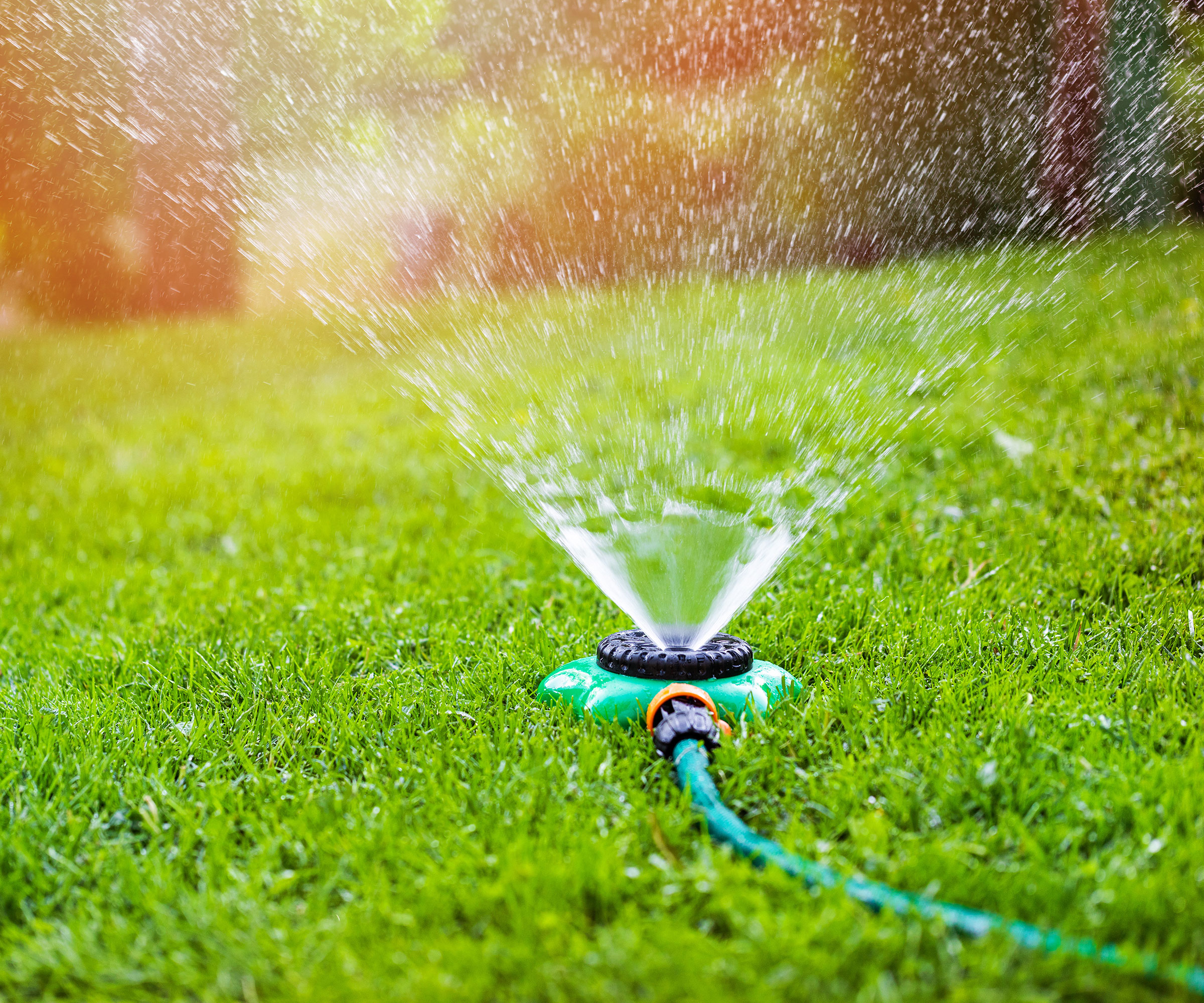When to start watering a lawn in spring – and 4 expert tips to help you make effective decisions
This is what you should check ahead of watering your lawn, or if you even need to water in spring at all


Do you find yourself wondering, when can I start watering my lawn? As temperatures increase in spring, many gardener’s eyes will turn to their lawn. It can look a bit worse for wear after a hard winter and in need of revitalization.
You can do many lawn care jobs to help a lawn recover and grow strongly for the coming season. Watering can help a lawn grow healthily in spring, but it can also do damage if it is not done at the proper time.
To help you understand when to start watering a lawn, we hear from some experts about when to water grass in spring, and get some recommended tips so you can know the time is right.

Any watering of a lawn in spring must be carefully judged
Watering as part of spring lawn care
Spring is a key time to do many lawn care tasks. As well as starting to mow the lawn again, important spring lawn care tasks include aerating, scarifying, and fertilizing a lawn. Watering a lawn can play an important role too, but it will depend on many factors, outlined below.
When should I start watering my lawn?

Watering can play a role in any spring lawn care regime
The ideal time to start watering a lawn in spring will depend on your local climate and US hardiness zone, along with the weather conditions during the season. The best time will alter depending on variables such as local weather patterns, temperatures, and rainfall that all influence the moisture levels in your lawn.
The one certainty is that you do always need to wait until winter is long gone and the ground has thawed before thinking about watering your lawn. Watering when the soil is cold and already moist would be a lawn care mistake that can do more harm than good to your grass.
Soil temperature is important in determining when the window to start watering a lawn in spring opens. Tyler Graham, editor of The Lawn Review, recommends: ‘You want to start watering in the spring once your soil temperature has reached about 50-60°F. For most folks in the south, this is around late March or early April. Up north, it is closer to May.’
Design expertise in your inbox – from inspiring decorating ideas and beautiful celebrity homes to practical gardening advice and shopping round-ups.
Grass will start to grow again in spring and you do want to wait until you see the first signs of new growth before contemplating watering a lawn. However, in many cases, watering may not be necessary until late spring or even early summer.
Sarah Jameson, the owner and founder of Lawn Chick, says that high levels of rainfall in spring can often suffice and provide all the moisture a lawn needs. She says: ‘If mother nature is taking care of irrigation, my advice is typically to hold off and conserve water for the summer months and periods of drought.
‘Most healthy, established lawns require at least 1” of water weekly to thrive, but if you’re getting that much water on your yard naturally through rainfall, there’s no need to irrigate. You can monitor this either through a rain gauge, or an app like RainDrop - which monitors local rainfall totals for you.’
Refrain from falling foul of watering a lawn too early in spring. The potential issues that can arise include shallow root development, which can leave lawns weaker and unable to cope with the higher heat of summer. Kenny Kwiatkowski, inventor of the GRASSHOLE System that protects garden sprinklers, also warns of other issues of watering too soon. He says: ‘Prematurely watering can lead to unnecessary water waste and promote the growth of fungi.’
If you lay turf in spring, seed a new lawn, or overseed a lawn to repair bare patches of grass, then these will have different watering requirements compared to an established lawn. In these cases, they want to be watered daily, or potentially more than once a day, to keep the soil and seed moist and aid germination. A lack of moisture can be a prime reason for grass seed not germinating.

Tyler Graham is the editor of The Lawn Review, a website and YouTube channel for DIY lawn enthusiasts.
Tips to tell when to start watering your grass

Watering a lawn will be required in warm and dry periods
To help you know when the time is right to start watering a lawn in spring, here are a few tips and tricks you can use to ensure you have a green and thick lawn come summer.
- Observe your lawn: the color and suppleness of your grass can show you if it requires more moisture. Grass that is dull green or has a bluish-grey tint to it is a sign that it is dehydrated and will benefit from watering. Sarah Jameson adds that if grass blades fold and wilt, or if you see footprints that ‘remain on the lawn longer than usual’, these are also tell-tale signs that you should water.
- Keep an eye on temperatures: monitoring local weather patterns and looking at the forecasts for the days and weeks ahead will help you make sensible decisions. If the spring days are particularly hot, and you are going through a dry streak that looks set to continue, then it may be beneficial to water. If the weather does not seem unseasonably warm and there is some rain forecast, then hold off from watering.
- Check the soil moisture: using a soil moisture meter can help take some of the guesswork out of deciding whether to water. Such a device can give you data on the moisture levels in the soil. ‘Soil moisture meters can be useful for a precise assessment, but an easy trick is to take a screwdriver out and stick it into your turf,’ says Sarah Jameson. ‘If, when you pull it out, the end of the screwdriver feels wet then you’ll know that there’s adequate moisture a few inches below the surface, and you probably don’t need to water your lawn. I advise homeowners to regularly check the soil's moisture at a depth of about 4-6 inches. Dry soil at this depth indicates it's time to water.’
- Know your soil type: any watering schedule should be tailored to the soil you have. Sandy soils will drain faster and grass on that soil type will require more frequent watering than lawns on clay soil. Understanding your soil and its moisture-holding ability, along with checking the levels down in the ground, can help avoid adding more water to an already-moist soil.

Sarah Jameson is the founder and owner of LawnChick.com, a trusted lawn care blog that educates millions of homeowners each year to help them achieve the greenest, healthiest lawn. Sarah’s blog is read by over 2 million homeowners each year and she is regularly cited as an expert source of lawn care knowledge by major publications.
FAQs
When should I start feeding my lawn?
The ideal time to fertilize a lawn in spring will depend on the variety of grasses that make up your lawn. Warm-season grasses are best fed in early spring when they start actively growing, while it is best to wait until late spring for cool-season grasses.
When you mow your lawn in spring, getting the height right is important. The mower should be set at a high height for spring lawns, at around three inches. This avoids stressing the grass by cutting too low too quickly.

Drew has worked as a writer since 2008 and was also a professional gardener for many years. As a trained horticulturist, he worked in prestigious historic gardens, including Hanbury Hall and the world-famous Hidcote Manor Garden. He also spent time as a specialist kitchen gardener at Soho Farmhouse and Netherby Hall, where he grew vegetables, fruit, herbs, and cut flowers for restaurants. Drew has written for numerous print and online publications and is an allotment holder and garden blogger. He is shortlisted for the Digital Gardening Writer of the Year at the 2025 Garden Media Guild Awards.


